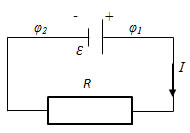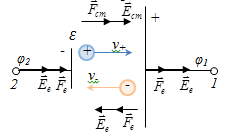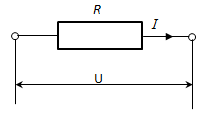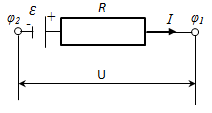main
To the list of lectures
|
LAWS of DIRECT CURRENT § 1 The electric current. The power and current density. EMF and voltage I. Any ordered (directed) movement of electrical charges called electric current. When an external electric field E in the conductor starts moving charges, ie generates an electric current. With positive charges move across the field, and negative - against the field. Take over the direction of current direction of movement of the positive charges. For the origin and the existence of an electric current requires two conditions: 1) the presence of free charge carriers (ie the substance must be conductors or semiconductors at high temperatures), 2) The presence of an external electric field. For a quantitative description of the electric current is introduced - current intensity - scalar physical quantity equal amount of electrical charge transferable per unit time through a cross-section S.
- for direct current, and
- for alternating-current. Current, which intensity and direction do not change with time, is called permanent.
- for direct current, and
- for alternating-current . II. To a portion of the conductor under consideration is a current I, is necessary to maintain a constant potential difference between these points of the conductor. different (except fixed charges):
EMF determined by the work performed by external forces to move a unit of positive charge along the closed circuit.
Sided force is equal to :
where
ie EMF equal to the circulation of the intensity vector of external forces. At site 1 - 2 (see picture) except of external forces force acting the electrostatic field
ie the resultant force on the section 1 - 2 equals
then
For a closed circuit
Voltage U on the site 1 -2 called physical quantity determined by the work done by the total field of electrostatic (Coulomb) and external forces when moving a unit positive charge on this part of the chain
§ 2 Ohm's Law 1. Ohm's law for a homogeneous region of the chain.Called homogeneous area free of EMF. The current in the homogeneous chain site is directly proportional to the voltage and inversely proportional to the resistance of chain
electrical conductivity.
where ρ - resistivity of the conductor - the resistance per unit length of the conductor. ℓ - the length of wire; S - cross-sectional area of the conductor. 2. Ohm's law for the inhomogeneous region of the chain Inhomogeneous called chain section containing EMF.
-- Ohm's Law for the inhomogeneous region of the chain in the integrated form
where
4. Ohm's law in differential form
σ -electrical conductivity; Ohm's law in differential form. The current density
|





